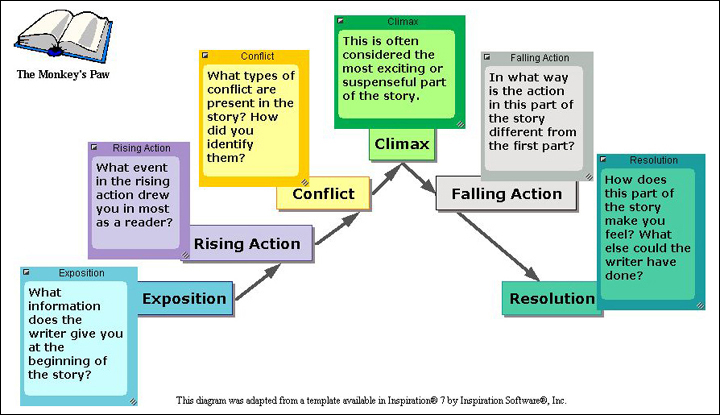Summary on Learner Perceptions of Interactive Whiteboards in EFL Classrooms
The purpose of the study is to acquire the feedback from the students in using the Interactive Whiteboards in the classes for English as Foreign Language. From the study, it provides the information on how well the Interactive Whiteboard will be able to help in the process of learning English. In addition, the study offers the data on how the students perceive this method of learning as an efficient method in learning English to the non-native speakers. By conducting the study, the efficiency of Interactive Whiteboard use in the English class can be proven to be favourable or otherwise.
In acquiring the data for the study, there are two methods used by the researchers which are through the interview and questionnaire. The first method, the interview, is conducted to 26 students in Tunisia and Lebanon which are taken from different classes. They are interviewed with the same question of “What is it like learning English in a class with an Interactive Whiteboard?” by the researchers. For the second method, a questionnaire is given to 100 participants from the several British Council teaching centers mainly from South Korea. The question given is in open-ended question on “What do you like or dislike about learning with an Interactive Whiteboard?” to the participants (Michael Orr, 2008). All of the data collected are divided and arranged according to the similar feedback by the respondents. The results later on, grouped into the answers of positive and negative feedbacks by the respondents.
In supporting the study, there is one previous research provided, claiming that Interactive Whiteboard as a tool in teaching, increase value of experience and motivation to the students in the classroom (Michael Orr, 2008). Another statement made by Department for Education and Skills (2007, p.6) "there are three key themes that dominate thinking about the role of Interactive Whiteboards in changing pedagogy" provides that the themes are increased pace of delivery, new use of multimedia; and an interactive teaching style (Michael Orr, 2008). Added to these, according to Glover, Miller and Averis (2004), they stated that teachers see Interactive Whiteboards as superior traditional to traditional boards because of the possibility of using multiple screens, annotation of the screen as the lesson proceeds, "drag and drop", "hide and reveal", colour shading and the capability to recall previous stages in the lesson (Michael Orr, 2008). Thus, all of the studies verify that the application of Interactive Whiteboard in the teaching process will be more beneficial and interesting in the learning of English.
Finally, based on the overall findings acquired, 82% of the results from the question are in agreement with the study which is Interactive Whiteboard gives positive impact more than the negative impact in the learning process and they support the Interactive Whiteboard as a positive method to be used in teaching process. 49% of the 82% respondents agree that the Interactive Whiteboard offers efficient teaching methods with its good visual quality and linked directly to the internet which can attracts the students. They also supports that the Interactive Whiteboard gives faster and better understanding in learning English. The rest of the percentages on the other hand show positive feedbacks on the physical contribution on the use of Interactive Whiteboard such as offers cleanliness of the classroom and enhancement in the skills of technology.
In conclusion, Interactive Whiteboard use in learning process presents the students with improved understanding on the subject alongside being skillful with the technology. The method allows the students to be more critical and creative in their thinking skills. In fact, the students will be more interested in learning English as the Interactive Whiteboard offers more fun and fascinated learning process rather than dull and boring traditional methods of learning.
Computer back then is a tutor, but it turns out as a pupil, until lastly became a tool. Initially, computer becomes a tutor at the point when it becomes the medium of teaching the students. It also gains more attraction for the students where they tend to focus more on the screen rather than the book or the teacher itself. Moreover, IWB which consists of the drag, audio, video function can elaborate on certain ideas better. If there are any difficulties that the student faced, they could easily access to the internet so that the learning processes happened were much clearer. The use of teacher as a tutor seems trivial. Cutrim Schmidt makes explicit reference to the use of peripherals. These are a slate for remote manipulation of the board and wireless voting buttons which allow the teacher to move away from the board relinquishing control to the learners where this is considered useful for achievement of lesson objectives. Using the peripherals, the material on the board can be manipulated and responded to directly by the learners without the teacher being present out front mediating the interaction. The computer, after that became just as the pupil. It helps the students and be together with them in solving their problems, guiding them in browsing the answers and information. IWB is just like a pupil since it needs a guide from the teacher to narrow down the scope of learning. As far as we know, even the excellent IWB is basically made by people. Thus, needs people to underline over certain subject matters otherwise they all remain as a medal that people gain for their brilliant mind and innovative art. In simple words, every benefit that the students gain from the IWB is all comes from the proficiency of the teacher itself. Lastly, computer becomes the tool of the language learning process when the students and the teachers themselves are so depend on the IWB in order to deliver the learning materials and subject concerns. Glover, Miller and Averis (2004) report that teachers see IWBs as superior to traditional boards because of the possibility of using multiple screens, annotation of the screen as the lesson proceeds, "drag and drop", "hide and reveal", colour shading and the capability to recall previous stages in the lesson (Michael Orr, 2008).
Product versus process oriented. According to Kern and Warschauer, 2000, “this came in the form of dialogues and pattern drills, grammar translation, audio-lingual teaching, in order for learners to produce automatic, correct response to linguistic stimuli (Michael Orr, 2008). Even speaking, reading and writing emphasized the linguistic product rather than on processes. “In our case, we have agreed that there is more processes oriented involved than product itself. This is due to reason it emphasize on the process which is using the IWB as a learning tools that further gives profits to the new learners and making the teaching process understandable. Plus, it makes the process becomes more attractive. It is proved when firstly, Kennewell and Morgan in 2003 highlighted that “IWBs are widely perceived to improve teaching and learning, adding value to the learner's experience in the classroom and increasing motivation (Michael Orr, 2008). Secondly, Yates quoted on 2006 that “thus whole class teaching with the IWB is seen as making it easier to structure the teacher student dialogue in order to push the development of higher order thinking skills. Multiple screens mean problems can be tackled in different ways, each approach worked through and saved. The thinking process followed is thus available for analysis and leads to the development of valuable metacognition.” (Michael Orr, 2008).
The use of IWB in EFL Classrooms can be underlined as learner centered. Learners got many benefits as IWB been a "wow" factor to the class and they appreciate modern technology more. This is because, the using of IWB allows for interactivity by making use of the different ways of manipulating the applications that are running on the screen. Like for example, they can layer pictures or text, overwriting, highlighting, hiding, revealing, dragging and dropping texts and pictures as well. Moreover, this situation also allows the learners to manipulate the information on the screen. They can do this from their seat or taking the pen and working at the IWB in front of the class. Learners got benefits more when IWB also give good quality computer graphics which allow for the visualization of concepts that is otherwise difficult to represent and also allow for the showcasing of learners' presentations. Besides that, they can print off anything that appears on the board and give copies for them instead of using the traditional way of writing in the book which wasting their time copying and also the learning process might be slower. This is because teachers need to wait for the students copying what those appear in the usual whiteboard, which are necessarily many of them. The article highlighted that Armstrong et al. (2005) focus on interaction as the "give and take between pupils and teacher which goes beyond a superficial learning scenario to a stimulating interplay which leads to new formulations and new understanding" (p.457) (Michael Orr, 2008). Thus, the use of IWB in language learning as learner centered gives extremely benefits for early language learning among students.
Reference:
Michael Orr. (2008, February). Learner Perceptions of Interactive Whiteboards in EFL Classrooms. Vol. 9, No. 2. Retrieved January 11, 2011 from http://callej.org/journal/9-2/orr.html.
Reflection on Assignment 1
CALL teaches us to be updated with several gigs that appears apparently. Whiteboard of EFL is one of the gigs that we meant. This new tools are about to emphasize on the easiness of learning process inside the classroom. It helps us dealing with dragging in and out the info so that any works would be faster, simpler and enjoyably. Apart from that, we can say that this assignment is an interesting assignment plus it is a simple one where we only have to summarize the study on learner Perceptions of Interactive Whiteboards in EFL Classrooms. Using one article on that particular topic, we analyze on how the study is done. On the other hand, we know new knowledge about interactive whiteboards where it helps a lot in learning and teaching. If previously, teacher deals with chalk and later marker for teaching, nowadays, teacher could only sit and click over certain icon so that the teaching and learning process may begin. The article is easy to understand, thus, we took a short time in doing this task. Overall, we enjoyed in working on this assignment!





























